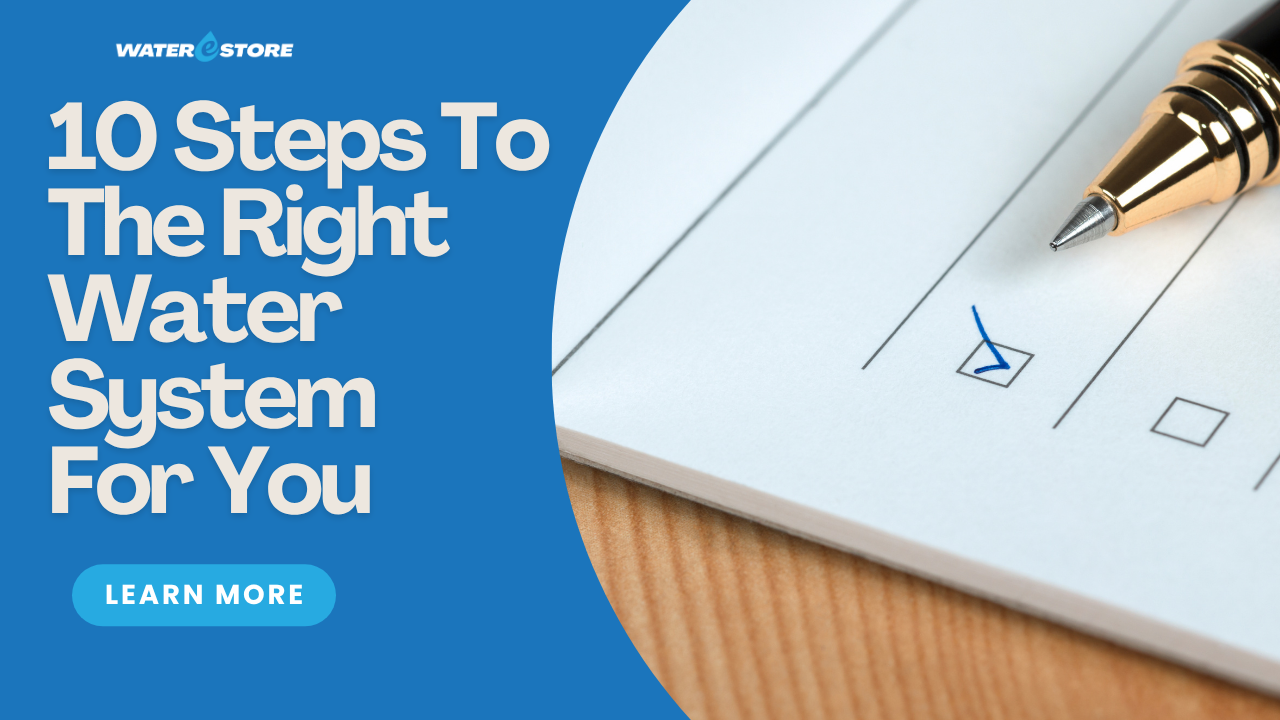
Thinking of buying a water filter for your home?
Before you click “add to cart,” there are a few crucial steps that can save you time, money, and frustration.
At Water eStore, we’ve helped thousands of homeowners across North America find the right water filtration system. And we’ve seen firsthand what happens when people skip these steps — poor water pressure, mismatched systems, or costly replacements.
Here’s your go-to checklist for making a smart, informed decision:
✅ 1. Test Your Water (Don't Guess)
Before choosing a system, you have to know what’s in your water.
Check for:
-
Hardness
-
Iron
-
Chlorine
-
Sulfur
-
pH
-
TDS (Total Dissolved Solids)
You can use a DIY test kit, a lab analysis, or even send us a sample — we offer free water testing. Click here to learn more →
✅ 2. Know Your Water Source
Are you on municipal water or a private well?
-
City water might require filtration for chlorine, lead, or fluoride.
-
Well water often contains iron, sediment, or bacteria.
Your source determines what kind of system you’ll need — don’t skip this.
✅ 3. Measure Your Water Pressure
Every filter system has a sweet spot for water pressure.
Use a pressure gauge and aim for
40–80 PSI.
-
Too high? Add a pressure reducer.
-
Too low? You may experience weak flow or poor performance.
✅ 4. Calculate Your Flow Rate
Your flow rate = how much water your home uses at peak times, usually measured in GPM (gallons per minute).
Undersizing your system is one of the most common mistakes.
A system too small can cause:
-
Pressure drops
-
Slower fill times
-
System strain
✅ 5. Know What You’re Filtering Out
Don't overbuy. Don’t underfilter.
Are you dealing with:
-
Sediment?
-
Chlorine?
-
Hard water?
-
Iron or manganese?
Test first, then choose a filter that targets your specific issues. No need for an “all-in-one” unless your water really needs it.
✅ 6. Pick Your Installation Spot
Whole-home system or under-sink? Basement or crawlspace?
Before you buy:
-
Take measurements
-
Look at your plumbing layout
-
Consider ease of access for filter changes
Need help? We’re happy to walk you through it.
✅ 7. Check Maintenance Requirements
All systems need care — some more than others.
Ask:
-
How often do filters need changing?
-
Will you need to replace salt, UV bulbs, or softener media?
-
Are the parts affordable and easy to access?
If the maintenance seems overwhelming, it probably won’t get done. Choose a system that fits your lifestyle.
✅ 8. Plan for the Real Costs
Beyond the upfront price, budget for:
-
Installation
-
Replacement filters or media
-
Optional add-ons like UV lights or pressure tanks
The best water system is one you can afford to maintain — not just buy.
✅ 9. Look for Certifications
Only trust systems that are NSF or ANSI certified — these prove the system actually removes what it claims.
Pro tip: Some manufacturer warranties only apply if your water quality meets specific standards. Don’t void yours by skipping this step.
✅ 10. Talk to a Water Expert
You don’t have to figure it all out alone.
Our team helps people every day choose the best system based on their water test, home size, and budget.
Click here to contact our experts →
🎯 Final Thoughts: Don’t Guess, Get it Right
Buying a water filtration system doesn’t need to be complicated.
With the right info, you can protect your home, your health, and your wallet.
